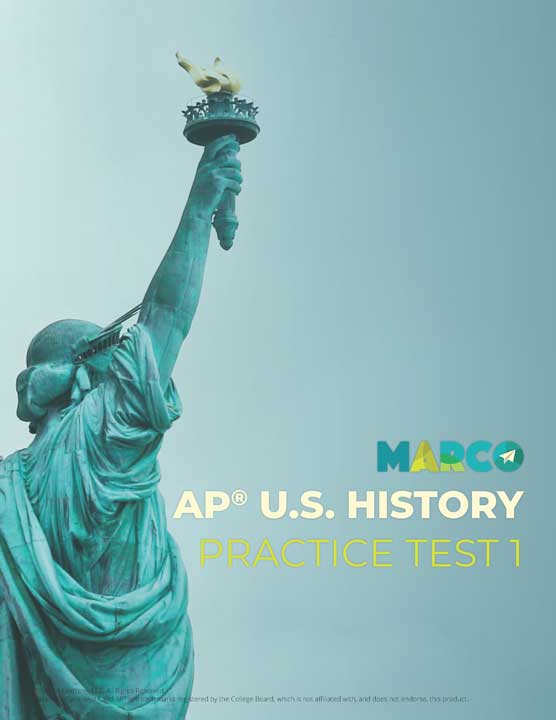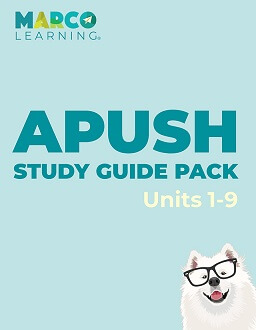


Unit 3 in the APUSH Exam
This time period extends from 1754 to 1800 and counts for 12% of recommended instructional content for an AP class.
KEY CONCEPT 3.1
British attempts to assert tighter control over its North American colonies and the colonial resolve to pursue self-government led to a colonial independence movement and the Revolutionary War.
KEY CONCEPT 3.2
The American Revolution’s democratic and republican ideals inspired new experiments with different forms of government.
KEY CONCEPT 3.3
Migration within North America and competition over resources, boundaries, and trade intensified conflicts among peoples and nations.
OVERVIEW
AP U.S. History Period 3 focuses on how the colonies shifted from independent communities to the United States of America. It covers the period of time from the beginning of the French and Indian War to the election of 1800. Some of the most
important documents in American history were produced during this time period.
After the French and Indian War, the British government attempted to gain more control over its colonies in the Americas. In particular, the British government wanted the colonists to stop moving westward into French territory and to help repay some of the costs of the war. This was standard practice for the British government. The colonists did not react well. They led a string of protests against the prohibition against moving west (the Proclamation of 1963) as well as the new taxes (The Stamp Act, The Townshend Acts, the Tea Acts…).The colonists argued that all of these perfectly reasonable actions by the British government should not be tolerated because the colonists were not represented in Parliament. “No Taxation without Representation” quickly became the rallying cry for colonists who were unhappy with British rule.
The first government created for the new states was governed by the Articles of Confederation. This document created a very weak federal government, very strong states, and very little regulation about important things like currency, the military, and warfare.
The second try resulted in the U.S. Constitution. Under this document, the founding fathers developed a government with three branches—the executive, the legislative, and the judicial branches. Even after the disastrous experience under the Articles of Confederation, some people were still hesitant to give the federal government so much power. A group of people in favor of the Constitution got together to write the Federalist Papers to help get it ratified. They also attached the Bill of Rights to make sure that the rights of the people were protected.
Even after the U.S. Constitution was ratified, there was still conflict over how to manage the new nation. Americans continued to move west in French territory, increasing tensions with both France and the American Indians.
TIMELINE
1763 The Proclamation of 1763 ordered colonists to stop migrating west of the Appalachian Mountains.
1768 British troops arrive in Boston.
1775 First battles of the American Revolution take place at Lexington and Concord.
1776 Congress declared independence from Britain with the Declaration of Independence.
1780 Articles of Confederation were adopted.
1781 The British surrender at Yorktown.
1788 The U.S. Constitution is officially sent to the states for ratification.
1791 The Bill of Rights was adopted.
KEY TERMS
KEY TERMS
French and Indian War A conflict between the French and the English over control of the Ohio River Valley.
Articles of Confederation The first constitution of the United States; established a very weak federal government.
U.S. Constitution The foundation of the U.S. federal government.
Federalist Papers A series of paper written by Alexander Hamilton, John Jay, and James Madison that advocated for a strong federal government.
Bill of Rights The first ten amendments of the U.S. Constitution that guarantee different civil liberties.
The best way to get better at something is by practicing.
That’s why it’s so important that you take practice tests to help you get better at the AP European History Exam. Only then can you expect to get a good score—and even improve your score.
Download your free AP® European History practice test HERE.
Download your printable study guides for all of the units for AP European History HERE.
 Help
Help